The Island That Time Forgot.
As my flight descends towards the city of Ambon, the islands of the Moluccas begin to appear across the azure blue waters of the Banda Sea like scattered Pleiades complete with blindingly white sandy beaches lined with swaying palms.

I am about to fulfil a lifelong dream by visiting The Spice Islands!
The Indonesian province of Maluku, anglicised over time as the Moluccas, comprises hundreds of tiny islands that are some of the most remote and least populated in Indonesia and indeed the world and, despite their exquisite beauty, they are certainly not on the tourist map. For centuries, this idyllic archipelago was referred to as The Spice Islands, covering an area of 75,000 square kilometres home to just 2.1 million people, the majority residing in the province's capital, Ambon.
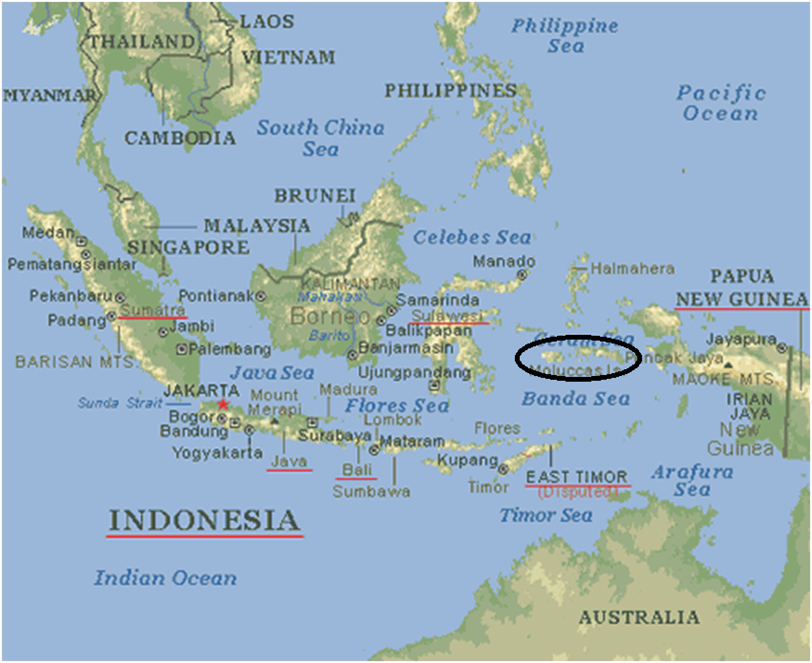
The Maluku's, encircled by the Banda Sea, link with the Ceram Sea to the north and the Arafura and Timor Seas to the south, surrounding this idyllic paradise. The area has had a turbulent history, especially during the 17th century when both the Dutch and the English entered the spice race vying to plunder and monopolise the abundance of nutmeg, pepper and cloves to satisfy the enormous demand in Europe. This lust for territory and profit proved to be a brutal period for these beleaguered islands, leaving an indelible stain evident even today. Over the ensuing centuries, this neglected corner of Indonesia has endured numerous upheavals but, the reality is that this province has largely been forgotten.
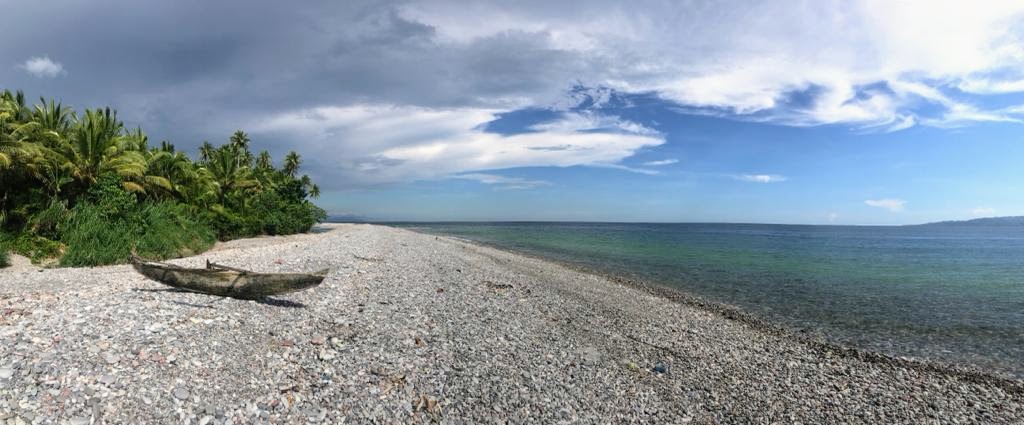
My stay on the island of Ambon was relatively short, which was a pity as I found this 'city of music' to be a charming mini-metropolis bustling with life. Most of my time was spent finding an outlet to obtain a rapid Covid test, and more importantly, I had a ferry to catch!
Ambon has an intriguing shape, for it is as if the landscape has twisted and turned back on itself, creating Ambon Bay which cuts 20 km into the island, providing a safe inlet for the fleet of small fishing boats tethered along its banks. The Amboina Port bustles with an activity where the overnight ferry to the island of Buru was taking on the last of the trucks, cars and hundreds of passengers for the twelve-hour overnight crossing.
Promptly at 8 pm, we cast off and lumber slowly into the bay before turning west, heading for our destination.
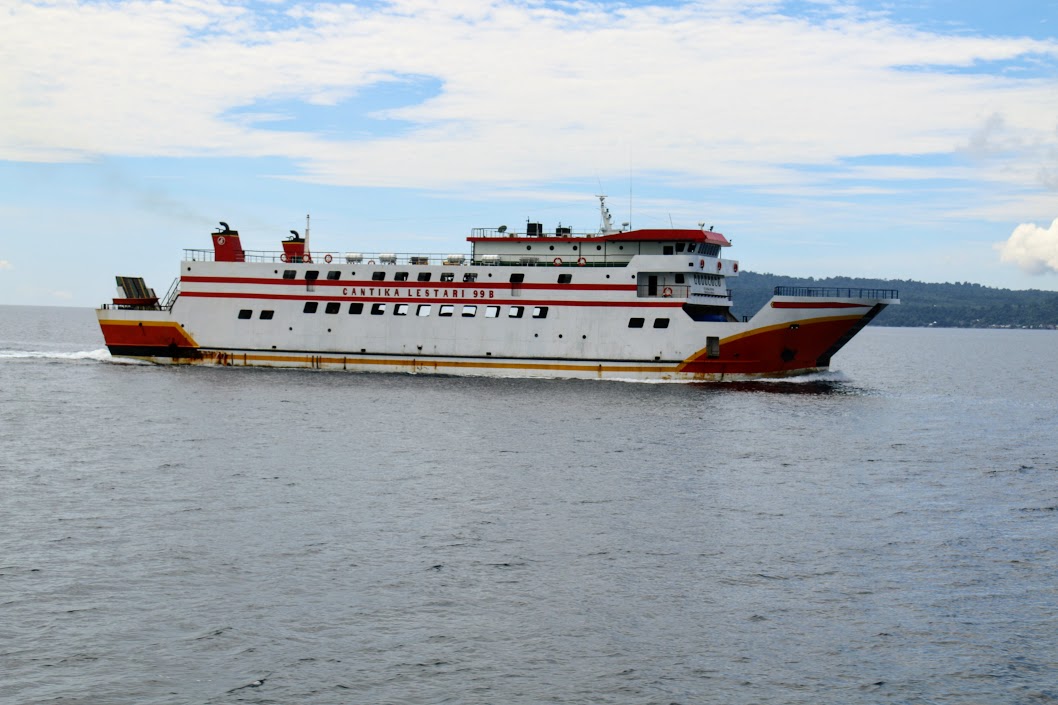
On the top deck, passengers immediately settle in to take their evening meal while twin speakers next to the canteen blast out an array of raucous disco tunes that will continue at full volume throughout the night. At the end of the evening meal, the majority of passengers begin to retire to the middle deck where hundreds of bunk beds, stacked three high will provide a night's rest, albeit a rather stuffy one to the strains of "I Love The Night Life' blaring from the industrial-sized speakers above.
Buru is one of the larger islands in the archipelago, 13 times larger than Singapore, but with less than 200,000 inhabitants, it bristles with tales of tragedy and inspiration and is saturated with politics.
It should be a writers dream.
This island lives with an unfortunate reputation as it is a place where political prisoners were exiled during the New Order era of the 1960s under the Suharto regime. Consequently, it was seen as a prison island which was probably true twenty years ago, but over time, it has has managed to shake off that unfortunate moniker and is trying desperately to reinvent itself.
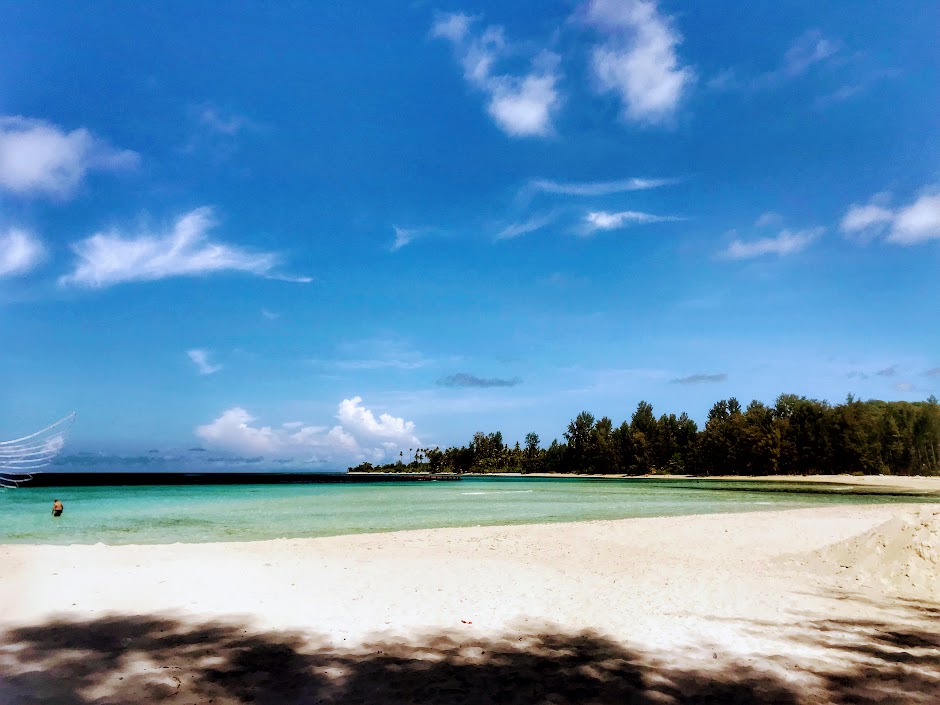
In the early light of dawn, Buru emerges from the low lying mist, and, as we get closer, its geography comes into sharp relief. The undulating hills are covered with dense evergreen forests of pine, casuarina and wild eucalyptus, while the fertile lowlands are awash with lush mangroves. With little fuss, the ferry docks at the port of Namlea, the capital, and the passengers, fresh from sleep, join the myriad of trucks and cars heading down the ramp while the diligent DJ on the top deck has changed his repertoire to softer Indonesian love songs playing at the same decibel levels he maintained all night.
This island was first mentioned in the west around 1365, and one feels that the inhabitants would have preferred to remain anonymous given what they would face for the next two hundred years. From 1658 until 1942, the Dutch East India Company held reign, followed by the Crown of the Netherlands, and, if as to add insult to injury, was occupied by the Japanese during WW2.
Namlea is an altogether pleasant town with bustling markets surrounded by gently rolling hills and abundant fertile grasslands. On one of the main streets, my nondescript hotel was opposite a large military camp painted in lurid light green. I would see several of these sprawling military installations over the next few days.
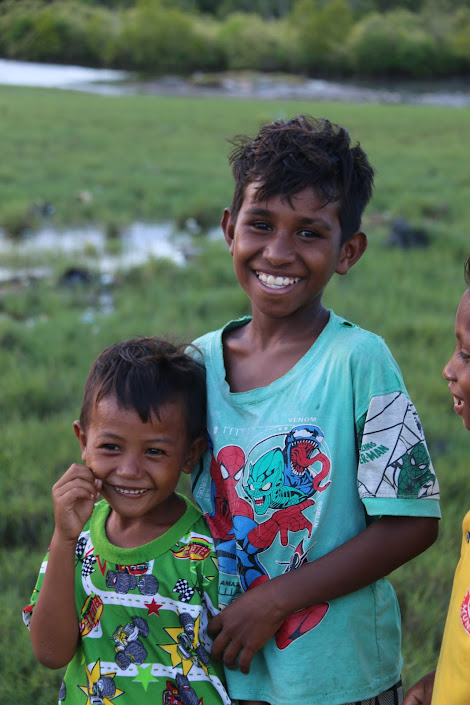
My first stop on this journey was to visit Buru's unpleasant secret.
Deep in the island's interior is one of Indonesia's most remote and infamous prison camps. During the 1965 repression of the political left, approximately 12,000 men were transported to Buru without formal charge or trial. During their detention, prisoners suffered torture, forced labour and malnourishment, as well as social isolation. Their banishment lasted for over thirteen years. The site of the original camp adjoining the village of Savanajaya is relatively nondescript. There is virtually no visual evidence that this was the central clearinghouse for arriving prisoners, with only a small weed-covered monument in the middle of a large field.
I visited the local village head where he and a number of his staff and the local school's English teacher were more than willing to answer my questions about what happened during those dark times. Included in the group were three rather lively octogenarians who were actual past prisoners from that time. These ageing gentlemen, separated from their families fifty years ago, were shipped by the government thousands of miles to this unfamiliar landscape.
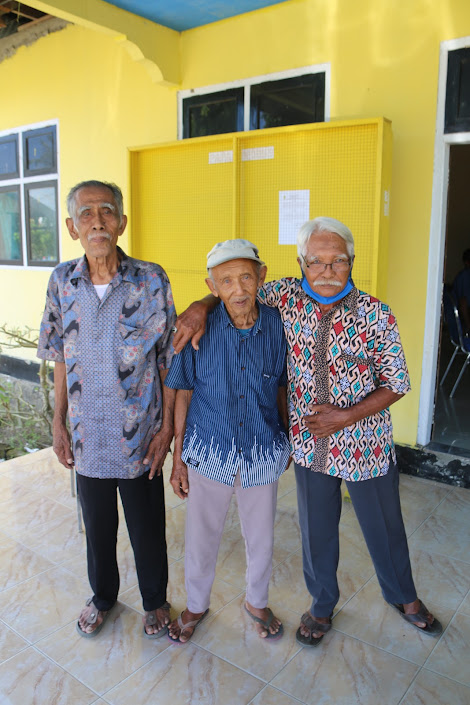
All three had chosen, on their release, to remain, married local women, raised families and became part of their new community. They seemed pretty content, but even so, this dark period of Buru's history is as forgotten as the sad monument that stands in that forlorn field.
Heading for the village of Sanleko, our route took us past vast rice fields b tilled by farmers in their conical hats, protecting them from the fierce tropical sun. These very fields were created by the poor souls who were snatched from their lives in Java and transported here, miles from anywhere.
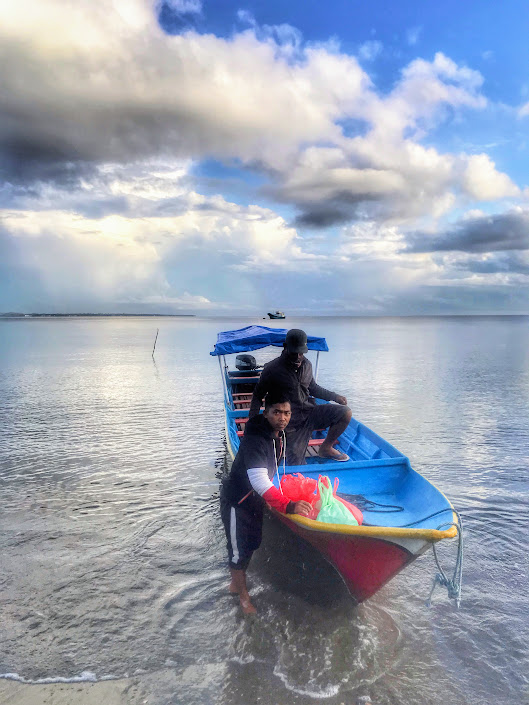
Arriving at the village of Sanlekoon aboard a small boat, my companions whom I met in Ambon are met by a large welcoming committee who showered us with garlands then performed a ceremonial dance. The entire village has assembled to greet our arrival! This ritual would be performed twice more at the next villages we visited over the following two days. The ceremony was the same, garlands bestowed upon us, children in ceremonial dress performing dance routines with copious amounts of food and drink offered.
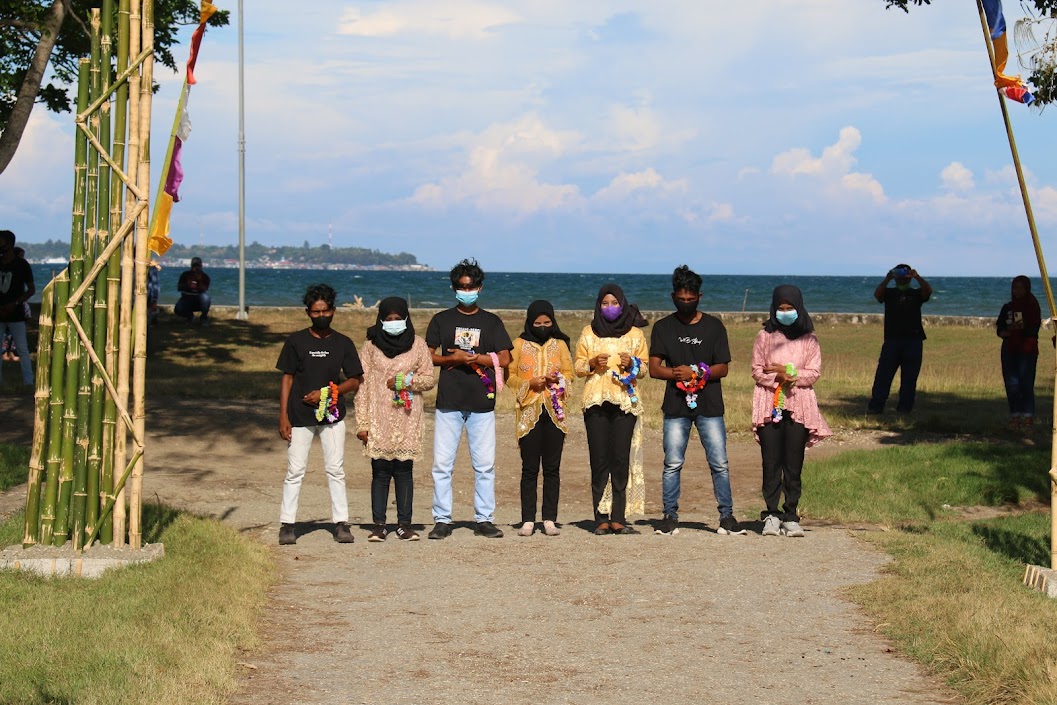
I discreetly enquire whether our arrival is because we are the first visitors since the pandemic began. No, we are the first visitors to visit their village ever!!
These inhabitants are now encouraged to engage in tourism activities, create homestay accommodation, and promote hiking and bird safaris. This program, financed by a German NGO, is trying to wean the population away from illegal mining and logging as a more sustainable way to make a living.

I hope it works for people such as these, who deserve a better life, but one does think that it will be an uphill battle as given the remoteness and difficulty of getting to these villages requires a great deal of intrepidness.
Buru is a beautiful island teeming with birdlife, including honeyeaters, kingfishers, cockatoos, and giant hornbills. The pace is gentle, the beaches picture postcard, and the people warm and welcoming… I like to think that one day I shall return.
To be continued ….
Buru Island Maluku Island Indonesia. November 2021
My journey to Buru and other islands was made possible by Go Wild expeditions, a non-profit organisation based in Jakarta.
Paul v Walters is the best-selling author of several novels and short stories. In addition, he occasionally raises to scribble for several international travel and vox pop journals when not cocooned in sloth and procrastination.
in beBee Writers and in 1 more group
Articles from Paul Walters
View blog
Well, Covid came, Covid left, and what did I do? · Let me think. Nothing, I did absolutely nothing a ...

This very morning I received an email from my publisher, who kindly sends me quarterly updates regar ...

In the dark times · Will there also be singing? · Yes, there also will be singing · About the dark t ...
Related professionals
You may be interested in these jobs
-

Lifestyle Assistant
Found in: Talent AU C2 - 6 days ago
Catholic Healthcare Eastern Heights, Australia Part timeLifestyle Assistant · Eastern Heights, QLD · Apply Back to Results An opportunity to build a career with an established and trusted values-based organisation · Be part of a supportive and inclusive 'people first' culture · Great salary packaging opportunities and other bene ...
-
Electricians
Found in: Talent AU C2 - 4 days ago
GR Engineering Services Perth, AustraliaElectricians · Perth WA, Australia · Apply · Back to Results · 3:1 roster- Reach your financial goals quicker · Great pay & Weekly pay cycle · Future career progression. GRES are currently experiencing significant growth · GR Engineering Services (GRES) are seeking Electricians ...
-
Plant Operator 4
Found in: Talent AU C2 - 11 hours ago
Mid-Western Regional Council Mudgee, Australia Full timeMid-Western Region Council is looking for a full-time Dozer Operator to operate Council's heavy earthmoving plant on works involved · with the maintenance and construction of roads and associated infrastructure, · particularly pushing gravel in quarries. · Key Accountabilities: ...



Comments
Lada 🏡 Prkic
2 years ago #14
Paul, your posts always offer a great reading experience. It is when you can't put down what you start reading. :)
Paul Walters
2 years ago #13
Thanks, Debasish as always
Paul Walters
2 years ago #12
Thanks for stopping by Renee
Debasish Majumder
2 years ago #11
absolutely fascinating buzz @Paul Walters ! enjoyed and shared. thank you for the buzz.
Paul Walters
2 years ago #10
Thanks, John, more to come…there are a lot of diverse islands in this group
John White, MBA
2 years ago #9
I loved every word of this one, Paul.
Paul Walters
2 years ago #8
Thank you Joyce
Paul Walters
2 years ago #7
Thanks Jerry
Paul Walters
2 years ago #6
More to come, it was a huge adventure. Thank you
Paul Walters
2 years ago #5
Thanks Pascal, more to come
Pascal Derrien
2 years ago #4
I keep discovering places I have never anything about with your articles THANK YOU
Ken Boddie
2 years ago #3
Ambon and Maluku are parts of Indo I know very little about, Paul. Thanks for sparking my interest.
Jerry Fletcher
2 years ago #2
Paul, You always make me feel as if I were at your side. I hope for these people that tourism can change their lives as you suggest. It may be they are just far enough out of the beaten path that the landscape won't be destroyed. And so it goes.
Joyce 🐝 Bowen Brand Ambassador @ beBee
2 years ago #1
Beautiful, as always, Paul. A few beBee-ers have given me a different view of Indonesia. It was my biggest hackfest for my website for a bit. They've been blocked for a while.
Seeing stories like this puts things in a different perspective. Thank you.